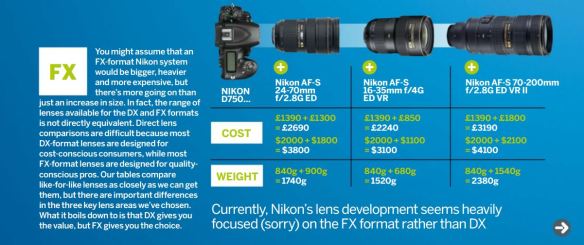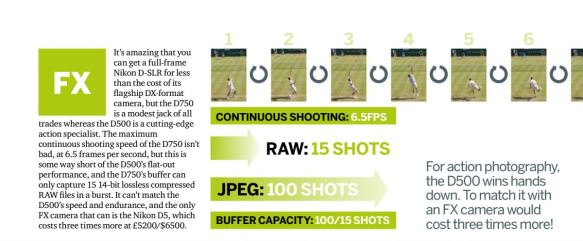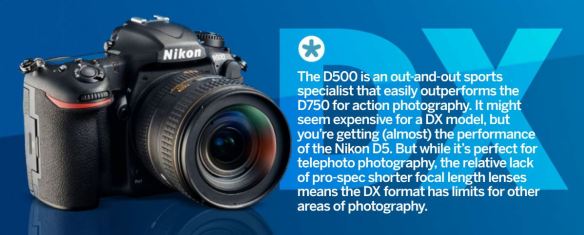Who really needs a full-frame D-SLR?
The Big Debate
DX – PROS
– You get much more camera for your money – the D500’s specs easily outstrip the D750’s
– DX lenses are smaller, cheaper and lighter to carry around – and you can use FX lenses on DX Nikons too
– The 1.5x ‘crop factor’ makes telephoto lenses effectively 1.5x more powerful
DX -CONS
– The smaller DX sensor can’t quite match a full-frame FX sensor for all-round image quality
– The smaller sensor leads to increased depth of field, which can be useful, but can also make beautiful bokeh harder to achieve
– At shorter focal lengths you’ll need to invest in DX lenses, which will be of little use if you upgrade to a full-frame Nikon later
 FX – PROS
FX – PROS
– The larger sensor area opens the way for higher ISO sensitivities or higher resolution sensors that don’t sacrifice overall quality
– Depth of field is shallower, giving images more spatial depth and attractive background blur
– If you want to turn pro, a full-frame Nikon is best both for quality and pro accessories
FX – CONS
– Even an ‘affordable’ FX-format Nikon like the D750 is a pretty expensive purchase
– You’ll need to invest heavily in lenses to exploit the quality potential of the full-frame format
– FX cameras are mostly (not always) bigger and heavier, and not designed for novices or those still learning
 The DX-format D500 and FX-format D750 battle it out
The DX-format D500 and FX-format D750 battle it out
N-Photo
Issue 63 – Sept 2016












